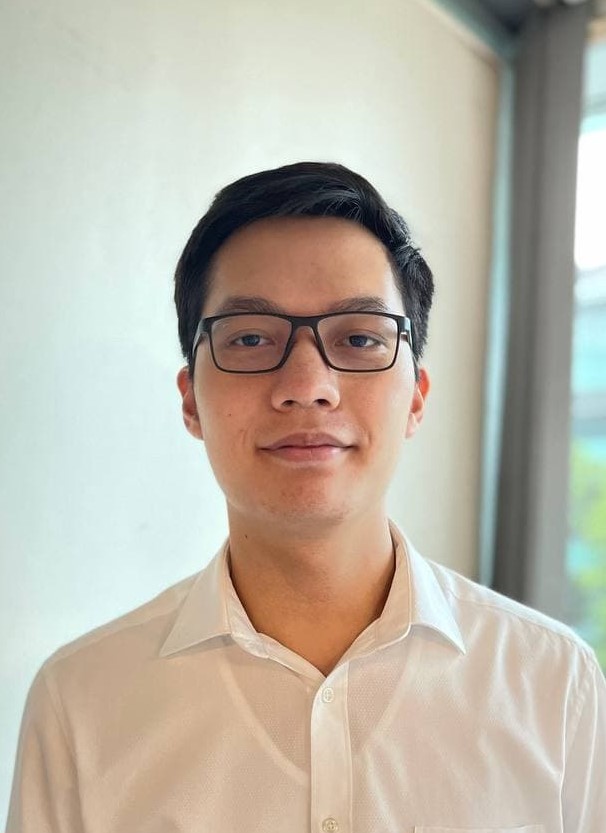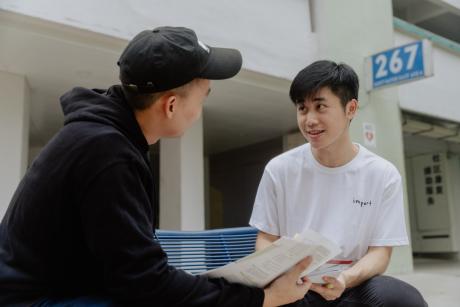By Lim Kien Chern
Singapore has seen a rise in cases of sexual assault, especially those of a digital nature committed against women. A case of voyeurism in 2019 sparked national outrage and introspection, after National University of Singapore (NUS) undergraduate Monica Baey was filmed in a bathroom without her permission. SafeNUS is a student group that was formed in the wake of this incident to spread knowledge of consent and facilitate communication between the student body and the school’s administration.
LIM KIEN CHERN sits down with SafeNUS special advisor Elly Lau, who talks about the importance of a culture of consent and gender equality, and her faith and conviction in the power of Singapore’s civil society to effect change.
Can you give us a brief overview of SafeNUS and your role in the organisation?
SafeNUS was founded in 2019 after the Monica Baey case. As there had never really been such a student group before, a few of us wanted to come together and work with the school to really address systemic issues of sexual violence on campus. As a special advisor, I provide strategic advice and oversee the general operations of our different subcommittees in areas such as outreach and literacy.
Something special about SafeNUS is that we try to operate in a decentralised and horizontal way; where being a specific subcommittee member does not mean your role is fixed and you only focus on that. You may find that a lot of student groups are very set with fixed roles like the ExCo, Secretary General, Welfare Head and so forth. But in SafeNUS we try to move away from that and recognise that everyone has different capacities and everyone can show up in ways that are not confined to existing structures. That’s the gist of SafeNUS!
The Monica Baey case is a well-known incident that brought sexual assault and the issue of gender equality to the forefront of public discourse. Can you give us your perspective on how institutions like NUS handle such cases and what improvements can be made?
Honestly, I can’t speak for anyone else but myself: a student who witnessed everything that happened (even before SafeNUS was formed). Looking at the Monica Baey case as well as past incidents, I noticed that NUS was always very concerned with things getting out to the media or how their reputation might be affected. They were quick to act in these areas but when it came to caring for victims or taking a trauma-informed approach towards supporting students and their communities, their responses were lacking.
Progress is being made, however, as seen in the newly-established Victim Care Unit (VCU). Unfortunately, reporting processes come with their own set of limitations. For instance, the mandatory reporting clause in the Penal Code can come across as vague and may not always be victim-centric. The process of being interviewed and interrogated about sensitive incidents like these can be even more traumatic, and mentally and emotionally exhausting for victims. In addition, police officers may not have much experience with such cases and come across as unsympathetic, or be bogged down by bureaucratic procedures as well. Indeed, many hesitate to bring these issues to light and file official police reports. This is why, despite what work has been done to improve frameworks, it is also important to consider and improve the culture and context within which these processes take place.
One aspect of this culture is our attitude towards punishment. An important goal of SafeNUS is to move beyond conventional forms of addressing sexual violence. This means that it’s not simply about asking for heavier penalties or sentencing, because that’s only one way to deal with the issue. In many cases, going to the justice system (the police, the courts) may not be the best course of action, and survivors may not always trust these processes. What we are aiming for is to move towards more restorative and transformative ideas of justice, which is admittedly very difficult because in Singapore we are conditioned to think that the law is the final arbiter. Simply increasing sentences and giving heavier penalties does not necessarily deter perpetrators and fix the problem, as perpetrators may not fully understand the magnitude of their actions. In other words, this sort of punitive approach does not guarantee that abusers willfully acknowledge the harm they have caused and reflect upon their actions. These are very complex things that many of us, myself included, are not ready for and I think there are a lot of things that we have to unlearn and unpack. SafeNUS as an organisation is trying to steer the conversation in this direction.
_0.png)
A SafeNUS Instagram campaign that raises awareness on how to support survivors of sexual assault.
You have touched on two of sexual assault’s multiple faces: shortcomings in institutions and culture. Considering the issue of underreporting (of sexual assault), which of these do you think is the bigger contributing factor?
I would say it’s very hard to pinpoint which is a bigger factor because these things go hand in hand. For example, a survivor might encounter victim blaming from a police officer during the process of making a police report, which shows how these norms about rape culture and whatnot can infiltrate institutions*. Although I am not a victim/survivor myself, the sensing I get from speaking to victims (who have come to SafeNUS for help) is that there seems to be a hesitation and anxiety concerning going to institutions for help. This is why I think efforts to address sexual violence must target both institutional and social shortcomings and the ways that they interact with one another.
*A relatively new area of study that looks at how the bias of police officers can affect investigations involving image-based sexual assault. Findings revealed the presence of victim-blaming in the sample of police officers at a university in Israel. (Zvi, L., & Shechory-Bitton, M. (2020). Police Officer Perceptions of Non-consensual Dissemination of Intimate Images. Frontiers in Psychology, 11. https://doi.org/10.3389/fpsyg.2020.02148)
Taking a step back from sexual assault to place it in its wider context, can you give your thoughts on the state of gender equality in Singapore?
Wow, that’s a really big question. I would say we still have a long way to go, although a lot of conversations are happening. This is especially so in the online space where we’ve seen increasing access for people to speak up on gender equality and its different aspects, like reproductive rights or even education. In addition, the increased reporting of sexual violence has also kickstarted conversations about gender norms. For instance, the belief in not taking “no” for an answer is a manifestation of toxic masculine ideals that perpetuates a culture which does not respect consent. However, having this space is one thing because whether or not it translates into real political action or systemic change remains to be seen. Although gender equality is enshrined in the Women’s Charter and we have organisations like AWARE, I think the conversation still has ways to go and needs to move towards: how we can address things on a systemic level.
What is the role of our sex education curriculum in combating sexual assault?
Others have brought this up before me—that sexuality education should be the first line of defence against sexual violence. Looking back, our sexuality education made no mention of consent as a concept. I feel like we should be teaching children that it’s okay to have boundaries about your own bodies and that space should be respected. Consent is ultimately a relational thing, it’s interpersonal and not just about sexual situations. For example if I didn’t give you consent to give someone else my phone number, that would not be an appropriate thing to do either. Normalising this idea of consent at every level is very important and currently lacking in our education system.
Having said this, one of my concerns is that such ideas can be difficult to implement, especially for institutions like the Ministry of Education (MOE), which is accountable to various parties. According to AWARE’s Saga Podcast, AWARE had delivered a consent-centric sexuality education programme and been given the green-light from MOE back in 2009. However, some conservative groups were uncomfortable with this change, and MOE eventually decided not to continue with AWARE as a vendor for their curriculum. As times change and people become more accepting of new ideas, I would say it is definitely possible for a mindset change and a shift towards a more consent-based syllabus and culture, especially if there is more advocacy and political will to do so.
.png) SafeNUS aims to raise public awareness and share helpful tips and resources on sexual assault and consent.
SafeNUS aims to raise public awareness and share helpful tips and resources on sexual assault and consent.
In an article about the founding of SafeNUS, one of your founders (Lune Loh) mentioned that consent is a trivialised issue. Do you think this is still the case?
NUS did implement some compulsory consent modules after the Monica Baey incident, such as compulsory seminars. From my own experience attending them on campus, the class would simply go through some slides, and I feel that not many people took it seriously. Perhaps it was precisely because it was made compulsory that people were so tired of it and treated it like a joke.
At SafeNUS, we believe in equipping everyone with the capacity to be a peer supporter. Instead of mandating an online quiz or module, I think it would be better if we have opt-in workshops that also teach you how to be a peer helper and inform your friends about consent in everyday life and interactions. Personally, I think that such an approach would be a lot more organic and powerful in creating a culture of consent, as opposed to mandatory one-time courses that do not go into the nuances of consent.
How do you interpret SafeNUS’s role in promoting consent and what has been done about it?
Our most recent initiative was publishing a series of Instagram posts and a booklet to inform incoming freshmen on how they can practise consent in the context of the Freshman Orientation Camp. Outreach and publicity are a very big part of our efforts and we’ve also had workshops for sexual assault first responders in partnership with AWARE. These go beyond just consent and delve into how one can help victims of sexual assault by being aware of trauma when interacting with survivors — in other words, taking a trauma-informed approach to response.
.png) Information on consent in the context of Freshman Orientation Camps in NUS, shared on the SafeNUS Instagram account.
Information on consent in the context of Freshman Orientation Camps in NUS, shared on the SafeNUS Instagram account.
Gender norms such as the objectification of women can manifest in widely-publicised incidents like Monica Baey’s but can also take the form of subtle day to day occurrences. What makes gender norms such a thorny issue to discuss?
How would you even define the objectification of women? This is an important clarification we need to make because oftentimes conversations get gridlocked in the public sphere since people operate from different definitions. Is thinking someone is attractive an objectification? Some people might think that complimenting someone’s looks constitutes objectification, while some might disagree and classify objectification as something that has a dehumanising aspect to it. So I think to have productive discourse we must ensure that we operate from clear sound definitions and also recognise we may have very subjective experiences with a particular word or phenomenon. Someone who has experienced harassment may have a very different understanding of what is objectification and what’s not.
Going back to the original point of more subtle everyday forms of objectification, it’s difficult to observe because no one would openly objectify someone in public nowadays; knowing that it’s wrong and that they might get cancelled. I would say it’s more of an internalised thought process that influences how you treat someone; something that is shaped by the norms and culture we have been socialised into. Cat-calling and perhaps the swiping of people on dating apps come to mind but all these examples are very complex, again because of ambiguity surrounding the concept of objectification.
Moving forward, what do you think we as a society can do to work towards gender equality and consent in Singapore?
I feel that it is important for political parties to work the ground and understand the situation. However, engaging in state dialogues in parliament or IPS forums is only one way to address the problem and it is not best to rely entirely on state institutions, because sometimes there are vulnerable and marginalised community groups whose interests are not within the state’s ambit and hard for them to address. these institutions don’t protect marginalised and vulnerable communities. These I think it is also very much about building communities: supporting one another and creating conversations, which can sometimes work in tandem with the state. Ultimately, I believe that tapping on our own capacities and engaging each other, all the while trying to advocate for our causes to the state and work together with them, would be a more sustainable solution for all parties in the long run.
Here’s an update since this article was published: Check out the Singapore’s most recent 2022 White Paper on Women’s Development here.
All images courtesy of Elly Lau and SafeNUS.
 |
Kien Chern is a Year 2 Politics, Law and Economics undergraduate at Singapore Management University. He enjoys rewatching shows on Netflix in his free time as well as a game or four of DOTA. Look out for his pieces on Social Space as he tries to understand the world and more often than not ends up a tad bit more confused! |








Comments